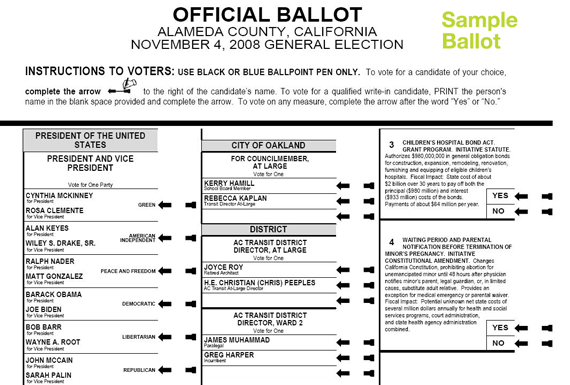Usability expert Dana Chisnell has written clear, concise guidelines for a plain language ballot. She writes about the American voting system but I would urge our Members of Parliament, particularly those in the Liberal Cabinet to study what she has to say before deciding that some electoral systems, such as proportional representation, will lead to ballots too complex for Canadians to understand.
How do we know that plain language can improve the clarity of complex ballots? Solid research. Janice (Ginny) Redish led a study using two ballots that contained exactly the same information, one ballot used “traditional” language and the other used plain language. The researchers found that participants voted more accurately using the plain language ballot. While all participants made errors, the researchers found that the error rate was highest among the less educated BUT that error rate went down when those same participants used the plain language ballot. Finally 82% of the participants preferred the plain language ballot over the traditionally worded ballot.
I must stress that these were complex ballots. Each ballot was several pages long and included instructions on how to vote, an option to vote for all candidates of a single party, 10 party-based contests, four non-party based contests, and three amendments or measures.
This in-depth study was based on the American system that uses a computerized voting machine but it can be applied to the Canadian paper ballot system. The study is so detailed it can and should be replicated in the Canadian context BEFORE parliamentarians decide that complex ballots cannot be made understandable by the average Canadian.
The MyDemocracy.ca survey appears to suggest that one cannot have complexity and clarity at the same time. I beg to differ and urge our government to read through the Redish study to see how plain language can make complex ballots clear and easy to understand.
You can find the entire study on the National Institute of Standards and Technology (NIST) website.
